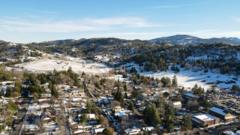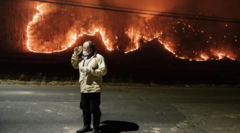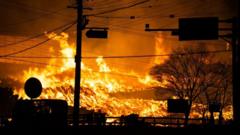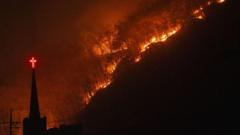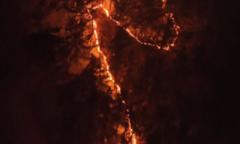Fire safety measures from around the world could help shape LA's response to increasing wildfire threats.
**Protecting Los Angeles: Strategies Against Future Wildfires**

**Protecting Los Angeles: Strategies Against Future Wildfires**
In the wake of catastrophic wildfires, experts suggest strategies to fortify Los Angeles and other cities vulnerable to fire.
California's ongoing battle against wildfires, exacerbated by climate change, requires significant changes in city planning and community practices. As the recent catastrophic fires in Los Angeles have highlighted the urgency of this issue, experts are urging local authorities to look beyond their own borders for solutions. With experience from other fire-prone areas, several strategies have emerged that could help begin the rebuilding process while minimizing future risks.
One of the key elements is the importance of community collaboration. Experts emphasize that individual homes are interconnected in terms of safety; the lack of preparedness by one home can jeopardize an entire neighborhood. Kimiko Barrett, an advisor with Headwaters Economics, noted that radiant heat from a burning home can lead to the destruction of nearby properties if prevention efforts are not uniformly adopted.
Lessons learned from Boulder County, Colorado, could provide the groundwork for effective fire management. Fire officials in Boulder County have sought to educate homeowners about the dangers of debris accumulation and certain types of landscaping. Unattended pine needles, for instance, can act as fuel for flames, while highly flammable juniper bushes have been labeled "gasoline plants" due to their propensity to ignite unexpectedly. Community initiatives have encouraged residents to clear their properties of fire hazards, with voters approving tax hikes for funding such efforts.
In Los Angeles, similar logic can be applied with a focus on local flora. Many palm trees, common in the area, pose a significant risk; once ignited, they are notoriously difficult to extinguish. Experts recommend against their use in high-risk areas, urging a transformation in local landscaping practices to curtail potential fire spread.
As climate change continues to escalate the frequency and intensity of wildfires, cities like Los Angeles must take proactive steps towards fire resilience, grounded in community involvement, education, and landscape management. By learning from successful efforts in other cities and fostering an engaged populace, the hope is to transform vulnerability into safety, safeguarding both lives and property.
One of the key elements is the importance of community collaboration. Experts emphasize that individual homes are interconnected in terms of safety; the lack of preparedness by one home can jeopardize an entire neighborhood. Kimiko Barrett, an advisor with Headwaters Economics, noted that radiant heat from a burning home can lead to the destruction of nearby properties if prevention efforts are not uniformly adopted.
Lessons learned from Boulder County, Colorado, could provide the groundwork for effective fire management. Fire officials in Boulder County have sought to educate homeowners about the dangers of debris accumulation and certain types of landscaping. Unattended pine needles, for instance, can act as fuel for flames, while highly flammable juniper bushes have been labeled "gasoline plants" due to their propensity to ignite unexpectedly. Community initiatives have encouraged residents to clear their properties of fire hazards, with voters approving tax hikes for funding such efforts.
In Los Angeles, similar logic can be applied with a focus on local flora. Many palm trees, common in the area, pose a significant risk; once ignited, they are notoriously difficult to extinguish. Experts recommend against their use in high-risk areas, urging a transformation in local landscaping practices to curtail potential fire spread.
As climate change continues to escalate the frequency and intensity of wildfires, cities like Los Angeles must take proactive steps towards fire resilience, grounded in community involvement, education, and landscape management. By learning from successful efforts in other cities and fostering an engaged populace, the hope is to transform vulnerability into safety, safeguarding both lives and property.




